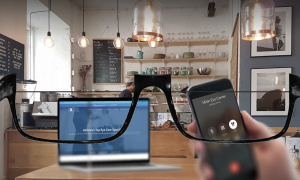What are Cataracts?
The lens of the eye is a critical structure inside the eye that allows humans to focus on objects at different distances. Composed mostly of water and protein, the human lens gradually becomes clouded as we age. Many of you may have heard the myth that a cataract is a film or veil that grows across the eye. This is actually not the case. A cataract is the clouding of the lens inside the eye.
In addition to the natural aging process, the formation of cataracts can quicken from exposure to UV light, smoking, diabetes, eye injury, or the use of certain medications such as steroids. Although cataract development is usually a gradual process with aging, cataracts can sometimes develop rapidly. Because there is no pain associated with cataracts and your brain has a remarkable ability to adapt to diminishing vision, many people are unaware that they have a problem with their vision.
What are cataract symptoms?
As the lens in the eye changes with age, it turns from clear to a cloudy yellowish, color. A cloudy lens can lead to blurred vision, decreased color vision, increased nearsightedness, glare, and halos around lights at night. All of these symptoms resulting from cataracts can affect daily activities including driving, watching television, or reading. Typically, the earliest symptoms of cataracts to appear are halos or glare around headlights at night. In addition, new evidence shows that cataracts can interfere with sleep patterns, mood, and alertness.
What is a cataract eye exam?
A cataract eye exam at Milan Eye Center involves a thorough examination of the eye. In addition, we measure vision, eyeglass prescription, and astigmatism. A cataract eye exam also includes dilating the eyes in order to determine if another eye condition could be responsible for any decreased vision. We use advanced imaging techniques to gather information about your eyes that helps us in determining the optimal replacement lens for you.
What is involved with cataract surgery?
Cataract surgery is a quick and painless outpatient procedure that is performed at Milan Eye Center. We have state-of-the-art surgery suites to accommodate you. Using the latest technology, our surgeons can remove the cataract through an incision approximately 2.5mm in width. The procedure involves making a small incision in the cornea and removing the lens using ultrasound energy. The cataract procedure itself takes approximately ten to fifteen minutes. Rather than putting patients to sleep, topical anesthetic drops are used to keep the eye numb. The anesthetist provides medication through an IV to keep patients comfortable and relaxed, while still being awake enough to respond to any instructions during the procedure.
Find out more specifics on what to expect before, during, and after cataract surgery.
Surgical Eye Drops
The eye drops are an extremely important part of cataract surgery. You will need 3 types of medications: a Steroid, a Non-Steroidal Anti-Inflammatory (NSAID), and an Antibiotic. You will start the eye drops 2 days before surgery, and continue using them for 4 weeks after the surgery.
LessDrops is an easy and cost-effective way to apply the eye drops. LessDrops is a compound medication manufactured by Imprimis Pharmaceuticals. This regimen has all 3 components: Steroid, NSAID, and Antibiotic combined together in one bottle. These drops are not covered by insurance, and they are $60.00 per bottle.
If you are moving forward with cataract surgery for one eye, you will need 1 bottle to complete the regimen (total of $60). If you are proceeding with cataract surgery in both eyes, you may need a total of 2 bottles to finish the treatment for both eyes (total of $120.00). If you find that the original bottles are not enough to complete the regimen, an additional bottle can be purchased from Milan Eye Center. LessDrops is the preferred method of Milan Eye Center surgeons.
The traditional way: all 3 individual medications can be sent to your local pharmacy with enough refills to get more drops for your second eye surgery, however we can’t guarantee the affordability of these drops, even though they can be processed through prescription insurance. An example of a regimen that would be sent to your pharmacy is Prednisolone Acetate, Bromfenac, and Gatifloxacin. You can check with your pharmacy to get an estimate out of pocket for these medications.
What is the recovery time from cataract surgery?
Recovery from cataract surgery is a simple process. Once the surgery is complete, patients are typically capable of resuming the majority of their normal activities within a day or two following surgery. Other than limiting strenuous activity and bending over and lifting heavy objects, patients may resume most of their routine activities in 24-48 hours. A protective shield is recommended to be worn over the eye at nighttime for a week and prescription eye drops must be used for four weeks. Within one to two days after surgery, most patients can see well enough to return to work.
How much does cataract surgery cost?
For patients who don’t have health insurance, Milan Eye Center offers an affordable option for cataract surgery. While the cost of cataract surgery can depend on a range of factors including the type of cataract replacement lenses used, Milan Eye Center is able to curb the cost of the procedure for patients. In many instances, ophthalmologists partner with hospitals or other outpatient centers for operating rooms and the use of anesthetists. Having our own surgery center allows us to control the personnel, the facility, and the anesthesia used in cataract surgery and allows Milan Eye Center to offer the highest quality, affordable cataract surgery in the Atlanta metro area.
Does Medicare cover cataract surgery?
As long as the patient’s visual symptoms and testing results justify the need for cataract surgery, Medicare will cover 80% of the cost of the procedure. Secondary insurance will typically cover the remaining cost of the surgery.
Return to Menu




